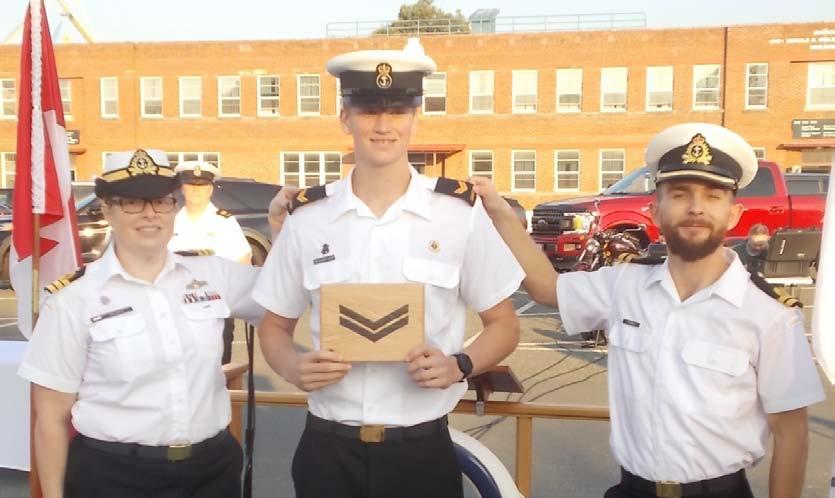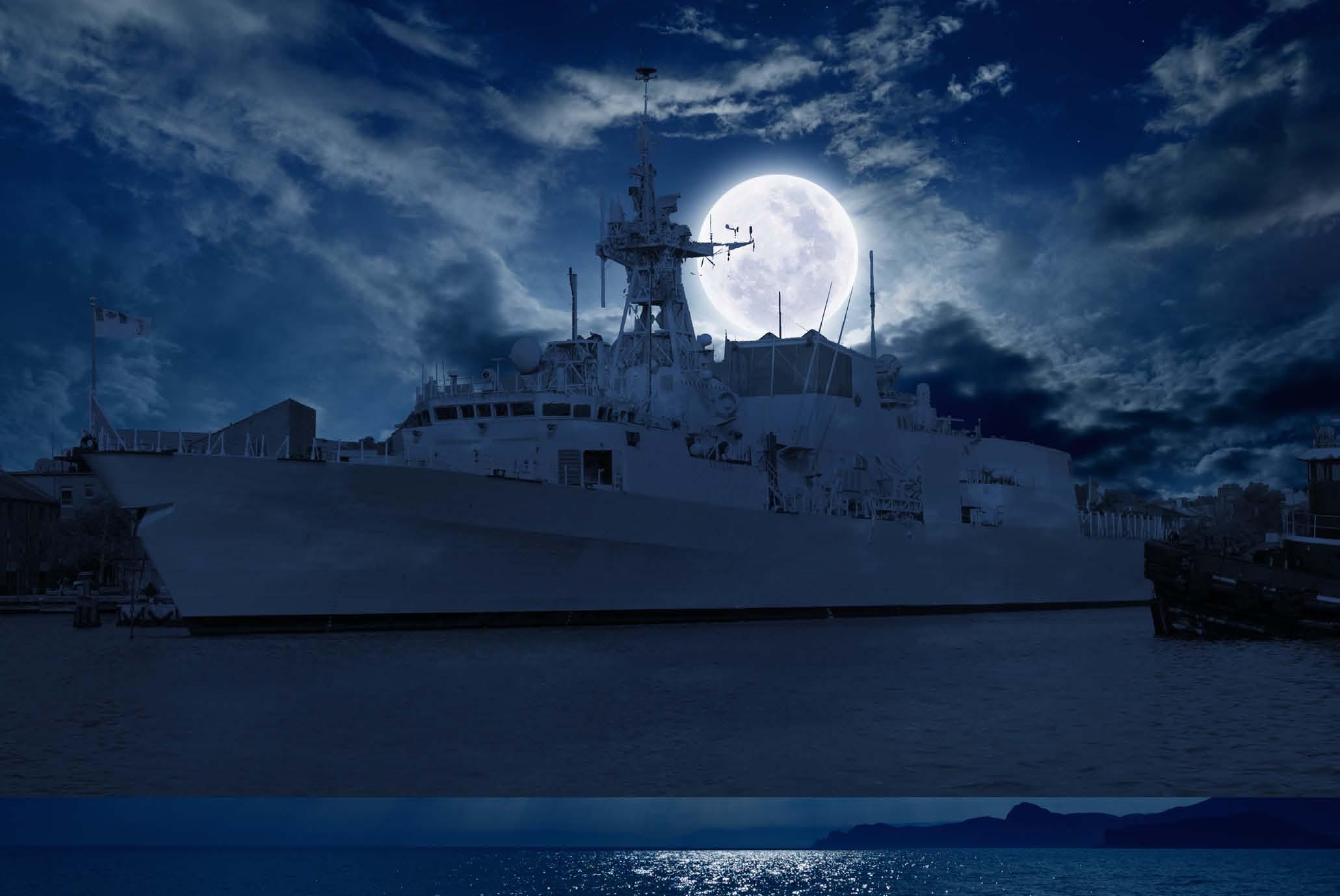



























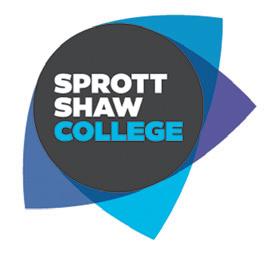











With the fall season upon CFB Esquimalt, the Acting Base Surgeon urged members to visit the Canadian Forces annual flu/COVID booster immunization clinic.

“Influenza and SARS CoV-2 continue to present a risk to the general population and Canadian Armed Forces (CAF) members. These respiratory viruses can be transmitted easily, especially in close quar ters and indoors,” said Lieutenant (Navy) Michael Fulmore, Acting Base Surgeon at Canadian Forces Health Services Pacific (CFHS(P)).
The annual flu/COVID booster immunization clinic, operated by (CFHS(P)) healthcare profes sionals, offers flu shots and the approved Moderna Bivalent COVID-19 booster.


Lt(N) Fulmore said members could access either or both of the vaccines based on eligibility, and both are safe to be taken on the same day. Over 2,000 members were vaccinated last year; Lt(N) Fulmore anticipates the same for 2022.

“With the new COVID bivalent vaccine, we are hoping as many eligible people as possible will receive the vaccine,” he said.


Leading by example, Captain (Navy) Matthew Coates, Commander Naval Personnel and Training Group (NPTG), got his vaccine on Oct. 18.
“Despite a personal aversion to needles I got my vaccine booster today because I view it as a duty –not only to the health and well-being of my family and coworkers but to being part of the larger effort of getting beyond the impacts of COVID and con tributing to the important business of reconstituting the Royal Canadian Navy,” Capt(N) Coates said.
He also encouraged others to get vaccinated.
Rear-Admiral (RAdm) Christopher Robinson, Commander Maritime Forces Pacific/Joint Task Force Pacific (MARPAC/JTFP), also joined the vaccine campaign.
“The Royal Canadian Navy has faced many challenges, including the most recent pandemic,” RAdm Robinson said. “By working together we can build the immunity we need to resume our lives and our work. We need to be ready to confront future challenges to Canada, and step one is rolling up our sleeves for the COVID-19 booster.”
The combined flu/COVID booster immuniza tion clinic is open to all serving military members, both Regular and Reserve forces. Members are eli gible to receive the COVID-19 booster by dropping in if it has been more than six months from their last COVID-19 vaccine or active COVID-19 infection.
Shorter intervals can be considered case-by-case for medical or operational reasons.

















 Kateryna Bandura Lookout Editor
Kateryna Bandura Lookout Editor
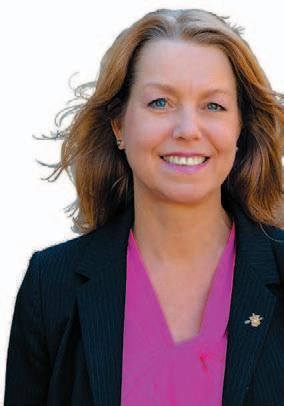
CFB Esquimalt saw an increase in working paws last week.
“‘Bring Your Dog to Work Day’ increases morale, builds strong communities, promotes good health, and gives folks an opportunity to give in a meaningful way,” said Matt Carlson, CFB Esquimalt Public Affairs Projects Officer and Team Lead for the CFB Esquimalt National Defence Workplace Charitable Campaign (NDWCC).
Happy puppy faces greeted CFB Esquimalt Defence Team members during the ‘Paws for Health’ event on Oct. 19. Members could bring their furry friend to work with a $10 donation as part of the NDWCC, running until the end of the year. The campaign benefits charit able organizations of the United Way Southern Vancouver Island and the 16 charities of Health Partners. This year’s NDWCC slogan is ‘Stronger Together’, chosen with the theme of inclusivity and the sentiment of togetherness.
Carlson said the ‘Paws for Health’ event gave members a unique opportunity to engage their workplace with one another’s canine friends.






“I love that CFB Esquimalt held this event because the presence of dogs in a working space can create an opening
for communication between people, and for me, they are fun to be around,” said Leslie Eaton, graphic designer at The Lookout.

A photo contest ran alongside the event for those par ticipating virtually, capturing pets of all shapes, sizes, and species that provide companionship to Defence Team members.

Last year members raised more than $180,000 to support the charities, but Carlson said the national NDWCC team is not focused on monetary goals.
“Meaningful giving looks different to everyone, so the goals are always getting the message out to 100 per cent of our membership,” he said.
CFB Esquimalt will see more in-person events as part of the NDWCC now that COVID restrictions have been lifted. Anticipated events include an Art Silent Auction, Activity Inclusion Day, and Purdy’s Chocolate Sales.


“We provide CFB Esquimalt an opportunity to engage in meaningful giving. In doing so, we are truly stronger together as a community,” Carlson said. “Personally, I think our community will be strong in engagement with this important campaign.”

The campaign continues on Base with donations accepted at uwco.ca/GCWCC/donate

Jazmin Holdway 250-363-3372 Jazmin.Holdway@forces.gc.ca
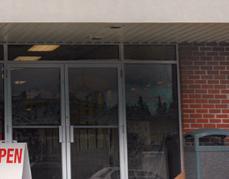


Kate Bandura 250-363-3130 kateryna.bandura@forces.gc.ca
Peter Mallett pkmallett@shaw.ca
teresa Laird 250-363-8033 production@lookoutnewspaper.com
Leslie eaton 250-363-8033 workstation3@lookoutnewspaper.com
aCCoU nt S / reC eP tion trina Winters 250-363-3127

advertiSing rePreSentative

Joshua Buck 778-977-5433 sales@forcesadvertising.com
editoriaL adviSor Capt Jeff Klassen 250-363-4006


Published each Monday, under the authority of Capt(N) J. Jeffrey Hutchinson, Base Commander.



Le LOOKOUT est publié tous les lundis, sous l’égide du Capv J. Jeffrey Hutchinson, Commandant de la Base.
The editor reserves the right to edit, abridge or reject copy or advertising to adhere to policy as outlined in PSP Policy Manual. Views and opinions expressed are not necessarily those of the Department of National Defence.
Le Rédacteur se réserve le droit de modifier, de condenser ou de rejeter les articles, photographies, ou annonces publicitaires pour adhérer au Manuel des politiques des PSP. Les opinions et annonces exprimées dans le journal ne réflètent pas nécéssairement le point de vue du MDN.



An anchor has been a ship’s neces sity since the ancient Greek mythological hero Jason sailed the ship Argo, as it allows a ship to stay in place despite wind, current and tide. Killick is the Gaelic name for a stone anchor wrapped in tree branches. For decades this name stuck with Commonwealth navies as a nick name for the rank Leading Seaman, mainly because their rank badge used a depiction of a fouled anchor, the situation when the anchor cable becomes wrapped around the anchor itself.
The Admiralty pattern anchor may be the most familiar to non-sailors. It con sists of a central shank with a ring or shackle at one end for attaching the rode and a crosswise stock nearby. At the other end of the shank are two arms carrying the flukes at ninety degrees to the stock.

The anchor cable is the ship’s connection to the anchor, and runs up through the hull via a hawse pipe, then across the fo’c’sle, over a windlass and down to the cable deck via the naval pipe. A modern ship’s cable is a hefty chain marked off in ninety-foot segments using paint and tarred marlin. Each section is referred to as a shackle. The cable’s bitter end is attached to the ship via a sturdy ring welded to the inside of the cable locker. On a cozy night in their rack, a ship’s boatswain has pleasant dreams of this rig.
Casting an anchor might be dropping the hook (mud hook) or setting the pick. This can be a rest time for a
ship’s company, where watches may be reduced. Normally, an anchor watch com prised of the ship’s personnel is set to monitor the ship and detect if the anchor is dragging, which plays an important role in anticipation of inclement weather.
Sailors might place their hand on the cable to feel it jumping, indicating the anchor dragging along the bottom. They also report the state of the anchor cable using the terms long stay - the anchor cable is taut and extended; and short stay - neither vertical nor fully extended, nor up-and-down, meaning the anchor cable extends vertically.
Weighing the anchor is the act of pulling up the anchor. An anchor’s aweigh is said of an anchor when raised just clear of the sea bottom. Of course, ‘Anchor’s Aweigh’ is also the name of the United States Naval Academy’s fight song and is strongly associated with the United States Navy, not the Royal Canadian Navy.
‘Slipped their cable’ refers to leaving an anchorage in an emergency where the cable is abruptly slipped, and the ship departs quickly, leaving the anchor and cable behind; it is also a sailor’s way to describe a person who has passed away suddenly. The term ‘swallow the anchor’ is commonly used to indicate a retirement from naval service; i.e., ‘Next July, Bloggins plans to swallow the anchor’.
You will find over 4,000 examples of Jackspeak in my book Jackspeak of the Royal Canadian Navy (2nd ed.).

The author of ‘Jackspeak of the Royal Canadian Navy’ and ‘Whiskey 601’, Mark Nelson developed a love of the Navy's language and lifestyle over his 26-year career in the service. After retiring as a Chief Petty Officer Second Class, he now works as a Library Systems Specialist at Red River College Polytechnic in Winnipeg, Man.
Follow Mark on Twitter @4marknelson
“On a cozy night in their rack, a ship’s boatswain has pleasant dreams of this rig.”
~ Mark Nelson, Chief Petty Officer Second Class (Retired)Marine
A soon-to-be-aired documentary featuring CFB Esquimalt military personnel explores how diversity in the Canadian Armed Forces has changed in recent years.
“I really wanted to showcase the people of Maritime Forces Pacific, all who serve with honour and integrity,” said Joetey Attariwala, author of the documentary and podcast titled Go Bold With Joetey Attariwala: Talking to Real Life Heroes.
Attariwala, 50, is a medical doctor turned military journalist, photographer, and a familiar face at the Base. He created a sixpart documentary series involving the Royal Canadian Navy under Telus’s Storyhive Voices 1.0 initiative. The initiative offered 100 grants and educational support to Alberta and B.C. residents for their first filmmaking experience.
The intention of Storyhive Voices 1.0 was to share the stories new local filmmakers are passionate about. Attariwala said he knew he wanted to capture sailors with diverse stories and backgrounds.
“I started out my series with Vice-Admiral Angus Topshee because I wanted to hear his motivation to join, the emphasis on diversity in recruiting, and what it takes to lead the formation and people under his command,” Attariwala said.
The interview was recorded earlier this year at the Base when VAdm Topshee was still a Rear-Admiral and then-Commander of Maritime Forces Pacific.
The second episode features an inter view with Alex Marshall, a firefighter at CFB Esquimalt Fire and Rescue Services, while the third and fourth episodes turn to members of the Canadian Submarine Force (CANSUBFOR).
“My one-on-one interviews with these submariners were absolutely amazing and exhibit how each is highly knowledgeable about every aspect of their vessel and how proud they were to serve for the Canadian Submarine Force,” Attariwala said.
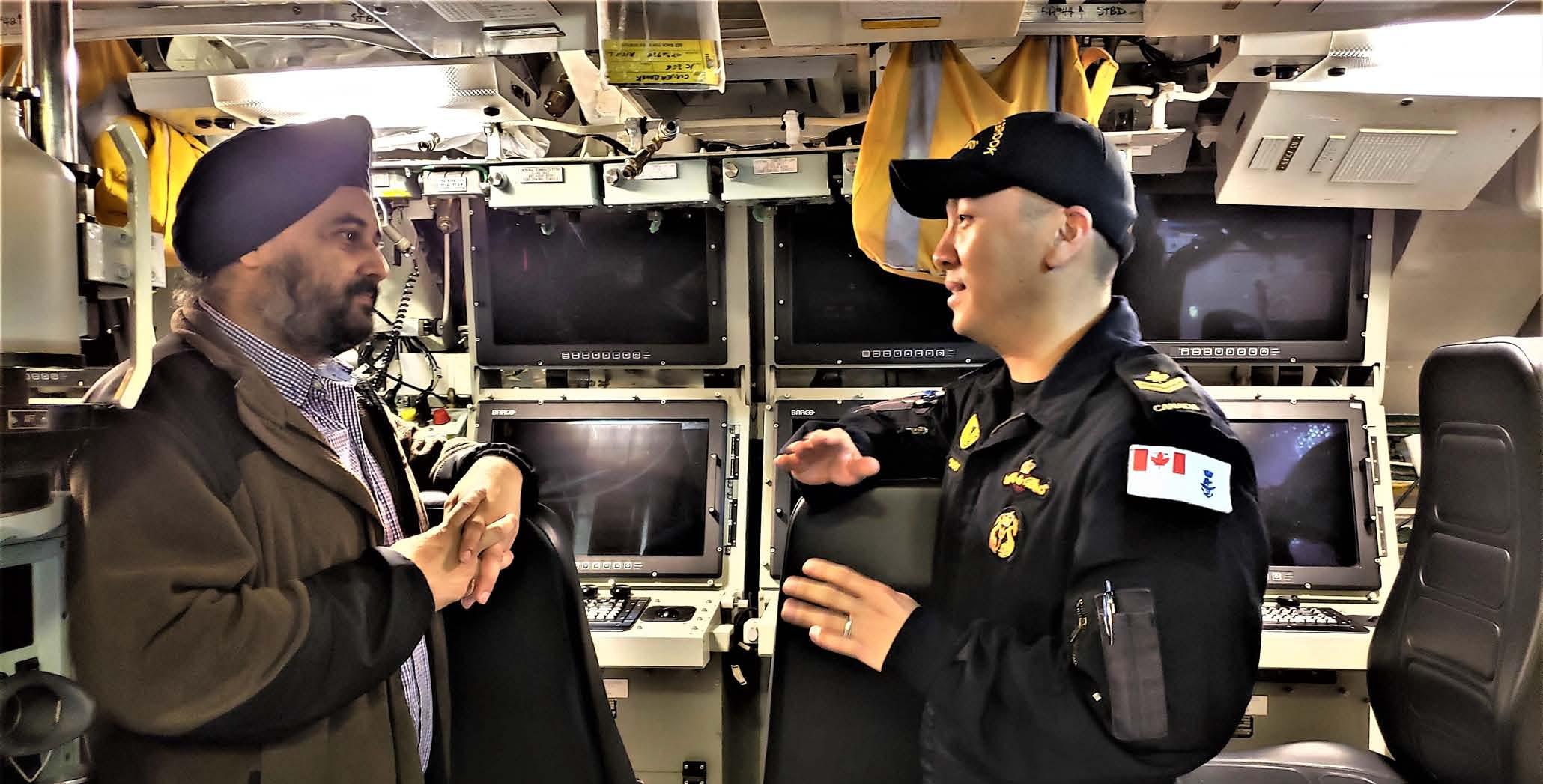
Attariwala then ventures across Esquimalt Harbour to Colwood for his final two episodes, interviewing Fleet Diving Unit (Pacific) personnel.


“It is important for me to tell the stories of sailors who come from different walks of life, races, ethnicities, genders, and cultural backgrounds as they are the true reflection of who makes up Canada’s society and mil itary,” he said.
Attariwala, who is Sikh, said the recent trends of increasing diversity in the Canadian Forces and making this the subject of his first film has also been very inspiring and reassur ing on a personal level.
“This journey through film has been very humbling because they are all fantastic, hard working people who are doing their very best to serve their country,” he said.
Attariwala is planning to film a second series exploring different jobs, trades, and departments on a Canadian warship.
Go Bold With Joetey Attariwala: Talking to Real Life Heroes will be available exclusively on Telus Optik TV starting Nov. 15.
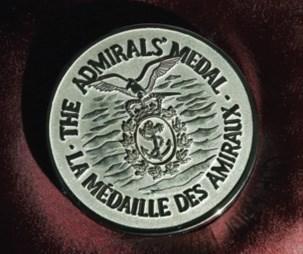
The Naval Association of Canada is putting out a call for nominations for the Admirals’ Medal.
Established in 1985, in conjunction with the 75th anniversary of the Naval Service of Canada, the Admirals’ Medal award was founded by the sons of Canadian Rear Admirals George Stephens and Victor Brodeur and Vice-Admiral Rollo Mainguy to honour their illustrious fathers. It is awarded annually to a member of the maritime/ naval community in Canada for outstanding achievements in the advancement of maritime affairs related to Canada.
Established in 1985, in conjunction with the 75th anniversary of the Naval Service of Canada, the Admirals’ Medal award was founded by the sons of Canadian Rear-Admirals George Stephens and Victor Brodeur and Vice-Admiral Rollo Mainguy to honour their illustrious fathers. It is awarded annually to a member of the maritime/naval community in Canada for outstanding achievements in the advancement of maritime affairs related to Canada.
Generally, the medal is awarded for outstanding achievement and impact in Canada’s marine sector in areas including vision, executive action, science, technology and academic studies or for the application of practical skills. Alternately, the medal is awarded for an outstanding contribution or body of work in a maritime/naval field of endeavour warranting special recognition.
Generally, the medal is awarded for outstanding achievement and impact in Canada’s marine sector in areas including vision, executive action, science, technology and academic studies or for the application of practical skills. Alternately, the medal is awarded for an outstanding contribution or body of work in a maritime/naval field of endeavour warranting special recognition. Responsibility for the Admirals’ Medal was transferred from the Royal Canadian Navy to the Naval Association of Canada (NAC) in 2021. The selection criteria, the annual award cycle and nomination instructions for this prestigious award are found at www.navalassoc.ca/the-admirals-medal.
Responsibility for the Admirals’ Medal was transferred from the Royal Canadian Navy to the Naval Association of Canada (NAC) in 2021. The Selection Criteria, the Annual Award Cycle and Nomination Instructions for this prestigious award are found at https://www.navalassoc.ca/the admirals medal/ . Nominations for 2023 will be accepted until 1 November 2022.
Nominations for 2023 will be accepted until November 1, 2022.



Guardian, the CH-148 Cyclone embarked on HMCS Winnipeg, has been busy since departing Esquimalt on June 14. With over 200 flying hours thus far, the Helicopter Air Detachment (HELAIRDET) has conducted various training and operational flights and different deck evolutions.
The primary purpose of the Cyclone is to serve the Navy, according to Captain Cody Hansen, one of the Tactics Coordinators (TACCO).



Like the Sea King before it, the Cyclone is a multi-purpose aircraft with increased capabilities and advanced technology. These capabilities include Anti-Submarine Warfare (ASW), Recognize Maritime Picture (RMP), and Search and Rescue (SAR). The Cyclone can also be called upon to conduct Vertical Replenishments (VERTREPS), which lifts/ lowers supplies, and hoists, which lift/lower people.

Guardian’s crews had the opportunity for less common training on this deployment. The crew conducted two VERTREPs over the fo’c’sle (front of the ship), a requirement for co-pilots as they upgrade to Aircraft Commander. It is also important training for the entire HELAIRDET as they are working on unfamiliar territory and for the Bridge Watchkeepers who drive the ship.
Guardian was also tasked to support allies by transferring over 30,000 pounds of sup plies between two ships. This took 37 trips and was a first for the members of Winnipeg’s HELAIRDET.














The helo needs fuel to keep flying, and the obvious solution is to land the helicopter for the crew to conduct a refuelling. But what

happens when, for some reason, the helo can’t land? That’s when the HELAIRDET con ducts a Helicopter In-Flight Refueling, or HIFR, another tricky evolution.















Finally, the HELAIRDET also con ducted SWOAD, or Ship WithOut an Air Detachment, training with sailors on Winnipeg. Sometimes, the frigates sail without an embarked helo and, therefore, without a HELAIRDET. Should a helo ever have to land on such a ship, maybe to drop off equipment or pick someone up, it is important to have people on board trained in both routine and emergency flying procedures.
HMCS Winnipeg’s embarked HELAIRDET personnel can be pulled from 443 Squadron in Pat Bay, B.C., and 423 Squadron in Shearwater, N.S. Despite a constant change in crew makeup, the HELAIRDETs meld quickly into an effi cient team. They keep the Cyclone running smoothly and support their host ship during exercises and operations.
HMCS Winnipeg’s HELAIRDET is deployed with the ship for six months. They participated in Exercise Rim of the Pacific (RIMPAC), which takes place every two years off the coast of Hawaii and is the largest international maritime warfare exercise in the world. HMCS Winnipeg and Guardian then chopped over to Operation Projection, where they will conduct forward naval presence operations in the Indo-Pacific region, cooper ate deployments, and participate in inter national naval exercises with partner nations. Op Projection shows Canada’s ongoing com mitment to global peace. The deployment of sailors and aircrew, ships and submarines show how the Royal Canadian Navy and Royal Canadian Air Force are ready to defend Canada’s interests worldwide.
A late touchdown gave the Royal Canadian Air Force (RCAF) victory over the Royal Canadian Navy (RCN) in the first annual Commodore’s Cup flag football game on Oct. 14.
“The RCAF fully deserved the win,” said Lieutenant (Navy) David MacLellan, RCN Team Captain, following the trophy presentation. “Of course, we wanted to win and hoist the trophy but it was a lot of fun competing and a great game to be part of.”
The Commodore’s Cup was organized by the office of Commodore (Cmdre) David Mazur, Commanding Officer of Canadian Fleet Pacific (CFP), and Chief Petty Officer First Class (CPO1) Matthew Goodwin, CFP HQ Unit Chief.

The competition was designed to build camaraderie and esprit de corps between members of Maritime Forces
Pacific (MARPAC), 19 Wing Comox, and 443 Maritime Helicopter Squadron in Sidney, B.C.. Participants and organizers agreed it more than delivered on that promise.
The RCN had jumped out to an 18-14 lead early in the second half following an interception and touchdown return by Lt(N) MacLellan.
Lt(N) Matthew Hallock of the Naval Tactical Operations Group, who scored the first-half touchdown, said the match-up’s closeness added to the game’s enjoy ment level.
“We are not deterred by the result because there is always next year’s rematch and everyone loves a good comeback story,” he said.
The RCAF held on for a 20-18 victory at Colville Road Sports Field in front of over 200 people. Each team scored three touchdowns, but the RCAF made good on a 2-point conversion following their touchdown. That proved to be the difference in the game.


Lieutenant-Colonel (LCol) Kevin Leblond, RCAF
Team Captain and Commanding Officer of 443 Sqn, was presented with the newly minted Commodore’s Cup trophy by Commander (Cdr) Ted Summers, Commanding Officer of CFP HQ. After accepting the trophy, LCol Leblond said his team’s victory was com pletely unexpected.
“It feels awesome to be champions but what is even more amazing is that most of the players on this team have never played or practised together before,” he said.
Captain (Navy) Mark O’Donohue, Deputy Commander Canadian Fleet Pacific, said he was impressed with the game turnout and the field’s excite ment level.
“The Commodore’s Cup was a resounding success,” Capt(N) O’Donohue. “It was well-organized with strong participation from both RCN and RCAF units, as well as youth and dignitaries from the local community. The RCN looks forward to winning the cup back next year.”








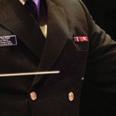














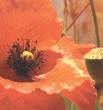













































Building a resilient mind may start with a picture of an irresistible choco late cake, says a local doctor.
“Imagine smelling the chocolate- y goodness, holding it up to your nose and feeling the hint of warmth. Now, close your eyes and truly think of how luscious it would be to even taste a little bit,” said Frederick Voon, MD, a Victoria General and Royal Jubilee Hospital Emergency Room phys ician, during a virtual presentation on Oct. 6. The 90-minute presentation addressed mental health and mind fulness on behalf of the Maritime Forces Pacific (MARPAC) Health and Wellness Strategy.
Dr. Voon, also a Clinical Assistant Professor with the University of British Columbia Faculty of




















Medicine, has noticed an uptick in the number of patients experiencing vary ing mental health concerns through out the COVID-19 pandemic. He said in many cases, people’s paths to recovery lie in their mental resilience, with some solutions readily available.


















During the presentation, Dr. Voon revealed a series of mental health workouts or ‘mental hacks’ – simple brain exercises that could be used to reverse negative thought patterns and thwart the cognitive processes that numb joy.

Imagining enjoying a piece of cake is one of the many exercises Dr. Voon recommended during his presenta tion. Another exercise he suggested was to think about things that provide anticipatory happiness, teaching the mind to savour pleasurable experien ces. Dr. Voon encouraged his listeners to keep a journal of joyous moments
and revisit them often.
The point of these exercises, he said, is to take more time daily to embrace all sensory pleasures that come with indulging in the things people enjoy.









“Take a few more seconds to stay with the thought about that piece of cake – or whatever else you choose to focus your mind on – and truly think about it and enjoy a positive experi ence. You will become able to turn a passing mental state into a lasting neural structure,” he said.
If practiced regularly, he said, these ‘hacks’ can help improve everyone’s mental health. Dr. Voon said for optimal results, people may want to stretch the exercise out for 20 seconds or longer and truly imagine all the sensory pleasures involved with the experience. The ‘mental hacks’ exer cises are simple, easy to do, and can be performed anywhere, he said.





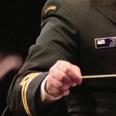








A deployed sailor has been named Canadian Fleet Pacific’s Sailor of the Third Quarter.
Master Sailor (MS) Kortni Watson, a Naval Combat Information Operator (NCIOP) in His Majesty’s Canadian Ship (HMCS) Vancouver, learned she won the award via Zoom.
“Being given the award in the presence of VAN families was a great privilege,” MS Watson said. “To be able to share this experience with our families back home, live at sea and across the world was fantastic.”
The news came on Sept. 29 from Commodore Dave Mazur, Commander Coastal Fleet Pacific, and Chief Petty Officer First Class Dave Bisal, Canadian Fleet Pacific Chief.
The award recognizes the outstanding achievements of junior non-commissioned members from the fleet.
On board Vancouver, MS Watson wears many hats.
Not only is she an NCIOP by trade, but she also:
• serves as Mess President of the Master Sailor and Below Mess
• is a Battle Cats representative – a group that focuses on Vancouver’s culture through divers ity, inclusion, and morale, and
• is a Sentinel
Her primary role outside all of that is to serve as one of two Operations Room Supervisors (ORS). This is a job typically filled by a Petty Officer Second Class, one rank above MS Watson’s current rank.
An ORS typically manages the information flow between key individuals in the Operations Room to

maintain a comprehensive air, surface, and subsurface picture. The ORS also serves in a supervisory capacity.

When MS Watson arrived on Vancouver in 2021, she was fresh off a two-year posting on the Maritime Coastal Defence Vessels – due to the different classes of ship and equipment used on each, she had to learn some of the key skills and equipment used regularly by NCIOPs on frigates. With Vancouver gearing up for deployment and short an ORS, paired with MS Watson’s exceptional performance since joining the team, she was asked to serve in the role as ORS.
“Over the past year-and-a-half, MS Watson has become one of the most effective and driven ORS I have ever worked with,” said Petty Officer First Class Kent Fox, MS Watson’s supervisor. “She runs the Operations Room with skill, effectiveness, and strong communication, while also having an understanding of Tactical Data Link [communications equipment] that has seen her get personal thanks from the Royal Australian and Chilean Navies.”
MS Watson says she couldn’t have done it without the support of the Vancouver team.
“My perceived success wouldn’t have been possible without the support from my supervisors, peers, and subordinates. Without everyone’s support in train ing me, supporting me through the steep learning curve encountered through this new position, and supporting me with respect to my secondary duties, I don’t believe I would have been as successful in VAN as I have been.”
Author’s Note: Team VAN is exceptionally proud of our teammate. Bravo Zulu!

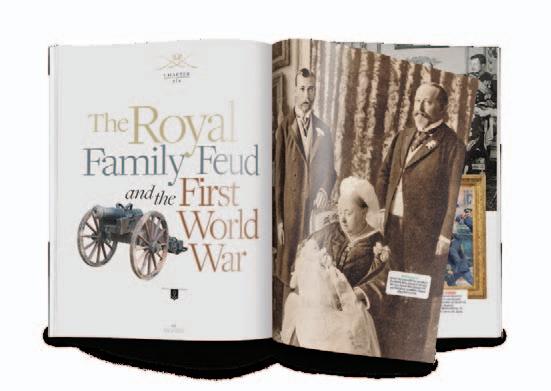
On Oct. 26 and Nov. 1, Military Family Services will host a two-part virtual career fair for military spouses across the country as part of the Military Spousal Employment Network.

“The benefit of a virtual career fair is that regardless of location, people from coast to coast will have access to multiple employers looking to hire,” said Augustina Charles-Frederiksen, Community Development and Stakeholder Relations Manager, at Military Family Services. “This is an opportunity to connect people with opportunities – and not just in their communities – but with remote work options too.”
The job bank currently has more
than 3,590 positions, including remote positions. This is in addition to new opportunities added to the Network daily.



Recruiters from nine Network employers will be looking to fill jobs in military communities across the coun try. These include:
• Bayshore Medical
• Canadian Forces Morale and Welfare Services


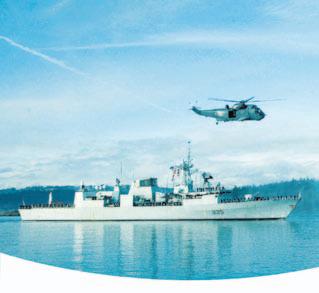
• BMO – Bank of Montreal
• Calian Group
• Bell Canada
• Commissionaires Canada
• NTT


• Language Research Development Group



• Strongest Families Institute Representatives from the Military Spouses Employment Initiative (Federal Civil Service) will also par
House For Rent Restored 1904 Heritage house. $2,300/month including Utilities. Contact Geoffrey 250-883-7632. 11-07
Family friendly 3 bed home near Uptown. Full access to back yard and garage/shop space. No smoking, no parties. $2900 +utils (heat pump). 1 bed suite below rented to a long term tenant. Pets considered. Available Dec. 1. Call/text Robyn 250-508-0536
Cook St Village 2 bedroom suite. Recent renovations include refinished hardwood floors, new paint and lights. Quiet, very clean, well maintained apartment building. Heat, hot water and parking included. No pets. No smoking. One year lease. $2300 per month. Available Nov 15 or Dec 1. Call 250 588 5457.
Naval Officer’s Mess Dress for Sale: Doeskin mess dress that includes a complete formal mess dress with a white jacket and a blue vest as extra pieces. Made in Halifax. For more details contact Bruce Winter @ 250-415-5784 (text or call) or labs4ever@ gmail.com. $400 OBO.
Laura Hanek remembers well the struggles of finding employment after her husband was re-posted.
“I moved to Petawawa from Burlington, Ont. so it was quite the shock when it came to job searching,” she said. “I was an in-house graphic designer, making a fairly decent salary, and I was confident in my career path,” she said.
Hanek is a freelance business owner and career-driven military spouse. Her illustration and graphic design busi ness attracts clients from all around the world.
“I started my business in 2016 as a side gig, and I had part-time jobs to get
by. Those jobs helped me fund my busi ness into what it is today,” Hanek said.
Hanek’s husband joined the Royal Canadian Air Force Reserve and trans ferred to the Regular Force to become a full-time service member in 2016. He currently serves as an Aviation Technician (AVN Tech) in Petawawa, Ont.

Hanek said she was frustrated with employers’ reluctance to hire military spouses due to their more transient lifestyle.
“It’s quite a treat for towns near mil itary bases to have access to so much talent, and it can be a shame if they only look at it with stigma,” she said.
Being self-employed as a graphic designer meant that Hanek could remain employed despite any postings that came her way. Having experienced
the struggles of finding steady employ ment, Hanek said she tries to give back to the community.
“I have only had to move once so far, and my business is ready to move again should we have to,” she said. “I am a part of a local business network, and I am always keeping an ear out for pos itions that my fellow military spouses could fill.”
Speaking on what her advice for new military families would be, Hanek emphasized the importance of reaching out and asking for help.
“The military community shows incredible strength, resilience and a sense of family. I could ask for any type of help, and I know someone will have my back,” she said.
October is Cyber Month, an internationally recognized campaign held annually to promote cyber hygiene and cyber security best practices. This year, Cyber Month dived into the depths of phishing.
Phishing can be challenging to spot, and there is no simple way to ensure you are entirely protected against it. However, DND/CAF members’ aware ness is vital to our defence against the malicious cyber activity.
Phishing is a form of malicious cyber activity that uses authentic-looking but fake messages. These emails lure users into providing, updating, or verifying personal information (e.g. passwords, credit card numbers, Social Insurance Numbers, and bank information), following malicious links or opening trojanized attachments.

Cybercriminals have become experts at using sophisticated techniques to trick victims into sharing personal or financial information. They frequently employ scare tactics, such as threat ening to close your accounts or arrest you until private information is provided. Be sure not to get reeled into their tricks .
We are all on the cyber frontline with our smart devices, and the best way to protect yourself is to learn how to spot phishing before you take the bait.
What are the different forms of phish ing?
Most phishing campaigns are attempts to har vest personal information or distribute malicious content by casting a wide net to get people to respond or click. However, here are some more specific examples of phishing:
Smishing: a phishing attempt through SMS (text message).
Spearphishing: a targeted phishing attempt where the message is designed to sound like it is coming from a source you know personally.
Whaling: a phishing attempt aimed at highprofile personnel, such as senior executives or other high-ranking officials in an organization or government department.
Spoofing: involves creating a fake email address or website to masquerade as the official one and gain someone’s trust to entice them to share their personal information or click a link.
Phishing campaigns are becoming increasingly elaborate and abundant.
“The best way to protect yourself from a phishing campaign is to be highly cautious and thorough whenever a message requests personal information or unexpectedly and urgently asks you to open a link or an attachment.”

